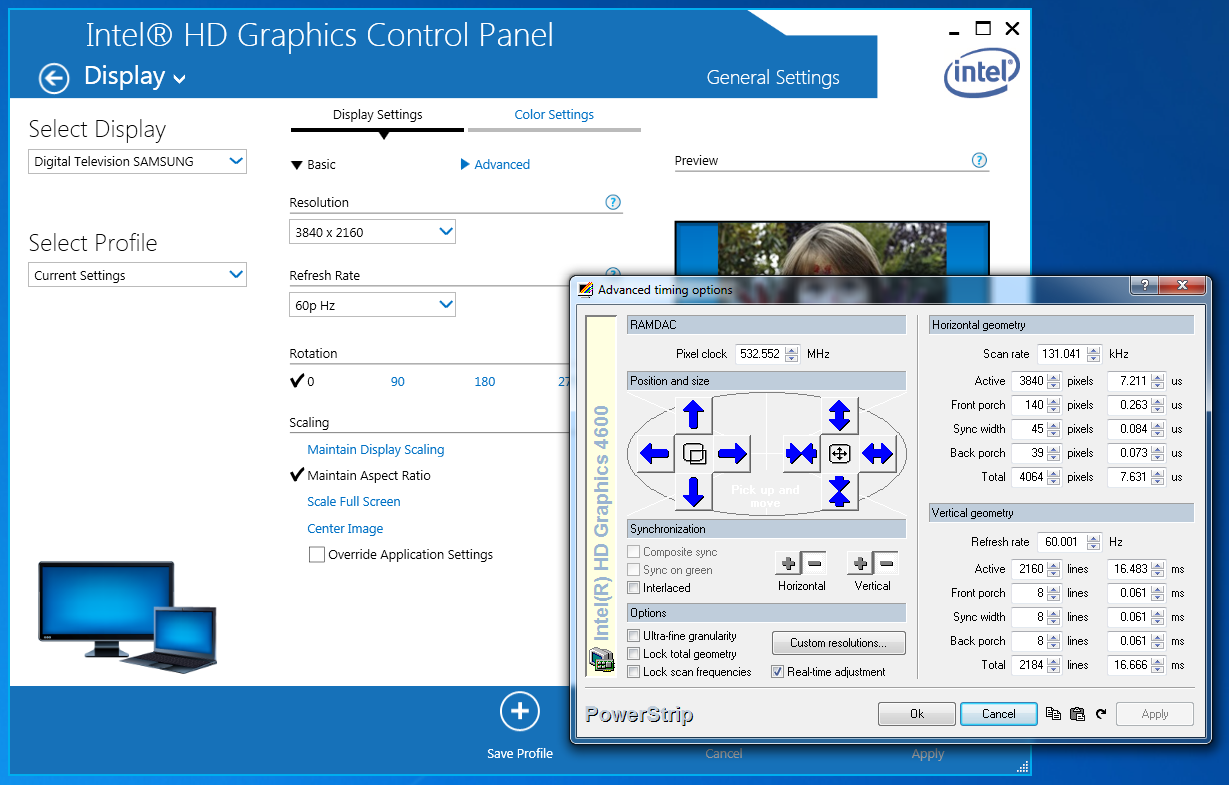The TV shows the picture and audio comes from the TV speakers when using the CAC-1070 at 4K/30Hz.
I have a Samsung TV and a DE7200 PC with HD 4600 from the i7-4712 CPU.
The TV shows the picture at 4K/60Hz and 50Hz when the UHD HDMI Color option is disabled but no audio comes form the TV speakers. However no matter what I tried it always displays the no signal message when I enable the UHD HDMI Color option.
I tested all 4 HDMI inputs and also changed the label to PC on each of the inputs which produces much clearer text at 4K/60Hz suggesting it enabled chroma 4:4:4.
I read about a fix on here suggesting I uninstall/reinstall the sound and graphics drivers and even only reinstalling the drivers but unfortunately after doing so there is still no audio at 4K/60Hz.
Any help to make it work would be very much appreciated!




